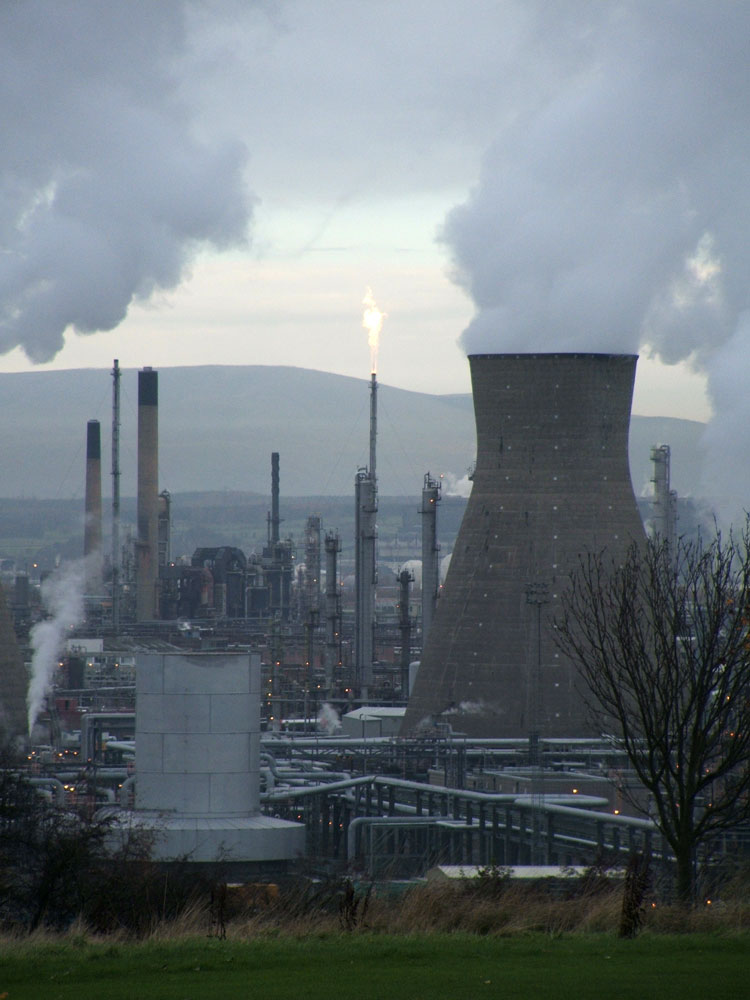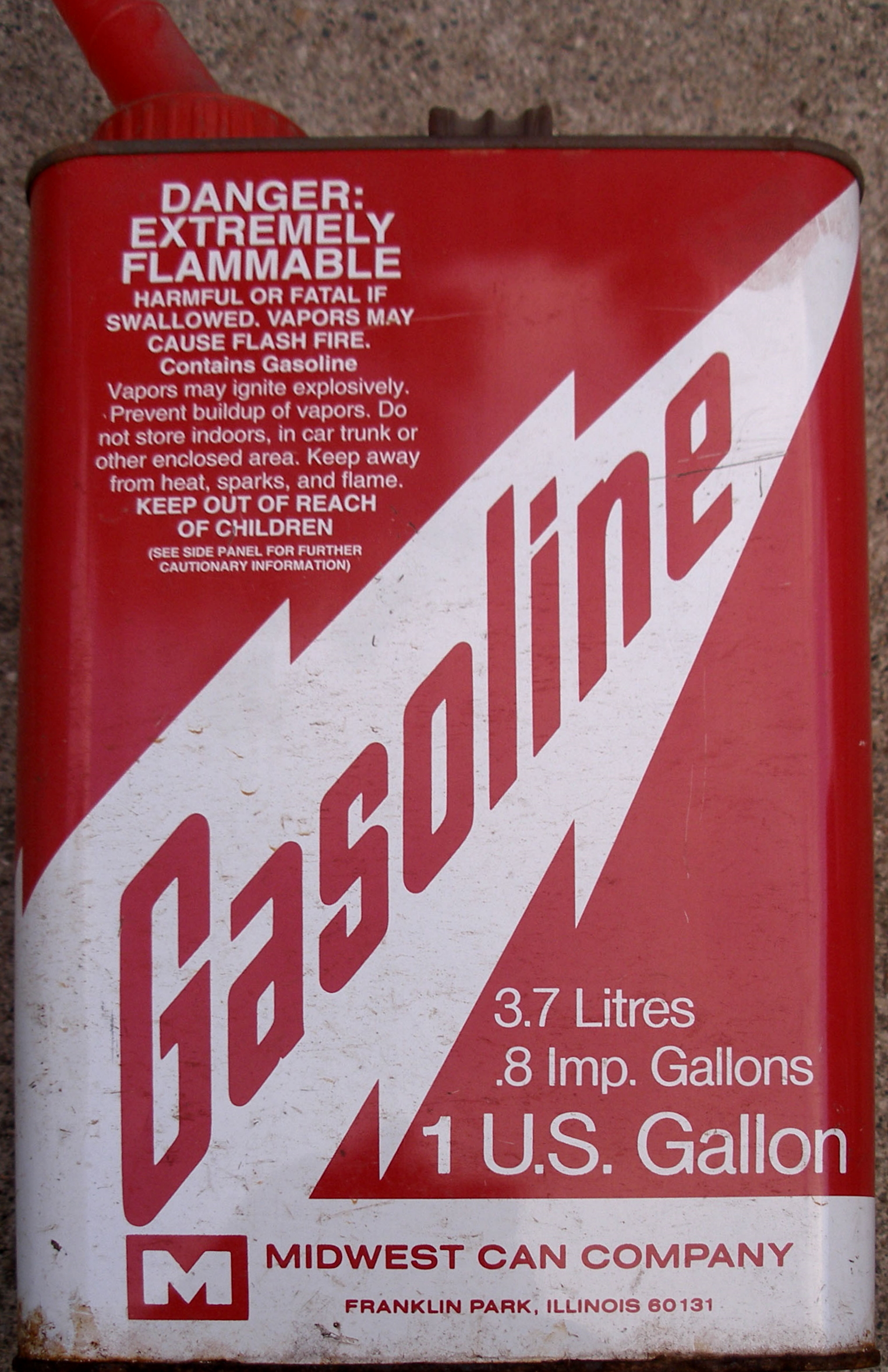|
Opal (fuel)
Opal is a variety of low-aromatic 91 RON petrol developed in 2005 by BP Australia to combat the rising use of petrol as an inhalant in remote Indigenous Australian communities. Though more expensive to produce, requiring a $0.33/litre Federal subsidy, a 2006 report found it would likely save at least $27 million per year when the social and health costs of petrol-sniffing were taken into account. A 2010 senate report showed that the introduction of Opal in 106 communities across remote and regional Australia had led to a 70% drop in petrol sniffing in those communities. Typical unleaded petrol contains 25% aromatics, such as toluene, ortho-xylene and para-xylene. In contrast, Opal contains only 5% aromatics, which means that it has less of the toluene and other solvents which produce the intoxication (or "high") that inhalant users are seeking. The Australian Government subsidises Opal's provision and restricts traditional unleaded petrol in some remote communities. According to ... [...More Info...] [...Related Items...] OR: [Wikipedia] [Google] [Baidu] |
Petrol Pump Daly Waters
Gasoline (; ) or petrol (; ) (see ) is a transparent, petroleum-derived flammable liquid that is used primarily as a fuel in most Spark-ignition engine, spark-ignited internal combustion engines (also known as petrol engines). It consists mostly of organic compounds obtained by the fractional distillation of petroleum, enhanced with a variety of Gasoline additive, additives. On average, U.S. refineries produce, from a Oil barrel, barrel of Petroleum, crude oil, about 19 to 20 gallons of gasoline; 11 to 13 gallons of distillate fuel (most of which is sold as diesel fuel); and 3 to 4 gallons of jet fuel. The product ratio depends on the processing in an oil refinery and the crude oil assay. A barrel of oil is defined as holding 42 US gallons, which is about 159 liters or 35 imperial gallons. The characteristic of a particular gasoline blend to resist igniting too early (which causes Engine knocking, knocking and reduces efficiency in reciprocating engines) is measured by it ... [...More Info...] [...Related Items...] OR: [Wikipedia] [Google] [Baidu] |
Petroleum Products
Petroleum products are materials derived from crude oil (petroleum) as it is processed in oil refineries. Unlike petrochemicals, which are a collection of well-defined usually pure organic compounds, petroleum products are complex mixtures. The majority of petroleum is converted to petroleum products, which includes several classes of fuels. According to the composition of the crude oil and depending on the demands of the market, refineries can produce different shares of petroleum products. The largest share of oil products is used as "energy carriers", i.e. various grades of fuel oil and gasoline. These fuels include or can be blended to give gasoline, jet fuel, diesel fuel, heating oil, and heavier fuel oils. Heavier (less volatile) fractions can also be used to produce asphalt, tar, paraffin wax, lubricating and other heavy oils. Refineries also produce other chemicals, some of which are used in chemical processes to produce plastics and other useful materials. Since petroleu ... [...More Info...] [...Related Items...] OR: [Wikipedia] [Google] [Baidu] |
Australian Brands
Australian(s) may refer to: Australia * Australia, a country * Australians, citizens of the Commonwealth of Australia ** European Australians ** Anglo-Celtic Australians, Australians descended principally from British colonists ** Aboriginal Australians, indigenous peoples of Australia as identified and defined within Australian law * Australia (continent) ** Indigenous Australians * Australian English, the dialect of the English language spoken in Australia * Australian Aboriginal languages * ''The Australian ''The Australian'', with its Saturday edition, ''The Weekend Australian'', is a broadsheet newspaper published by News Corp Australia since 14 July 1964.Bruns, Axel. "3.1. The active audience: Transforming journalism from gatekeeping to gatew ...'', a newspaper * Australiana, things of Australian origins Other uses * Australian (horse), a racehorse * Australian, British Columbia, an unincorporated community in Canada See also * The Australian (disambiguation ... [...More Info...] [...Related Items...] OR: [Wikipedia] [Google] [Baidu] |
Indigenous Australians
Indigenous Australians or Australian First Nations are people with familial heritage from, and membership in, the ethnic groups that lived in Australia before British colonisation. They consist of two distinct groups: the Aboriginal peoples of the Australian mainland and Tasmania, and the Torres Strait Islander peoples from the seas between Queensland and Papua New Guinea. The term Aboriginal and Torres Strait Islander peoples or the person's specific cultural group, is often preferred, though the terms First Nations of Australia, First Peoples of Australia and First Australians are also increasingly common; 812,728 people self-identified as being of Aboriginal and/or Torres Strait Islander origin in the 2021 Australian Census, representing 3.2% of the total population of Australia. Of these indigenous Australians, 91.4% identified as Aboriginal; 4.2% identified as Torres Strait Islander; while 4.4% identified with both groups. [...More Info...] [...Related Items...] OR: [Wikipedia] [Google] [Baidu] |
Indigenous Health In Australia
Indigenous health in Australia examines health and wellbeing indicators of Indigenous Australians compared with the rest of the population. Statistics indicate that Aboriginal Australians and Torres Strait Islanders are much less healthy than other Australians. Various government strategies have been put into place to try to remediate the problem; there has been some improvement in several areas, but statistics between Indigenous Australians and the rest of the Australian population still show unacceptable levels of difference. Colonisation and ongoing disadvantage Prior to European colonisation, it is likely that the health Indigenous Australians was better than poorer sections of Europe. Colonisation impacted the health of Indigenous Australians via land dispossession, social marginalisation, political oppression, incarceration, acculturation and population decline. The process of colonisation began with the arrival of the First Fleet in 1788. In the following decades, for ... [...More Info...] [...Related Items...] OR: [Wikipedia] [Google] [Baidu] |
Catalytic Converter
A catalytic converter is an exhaust emission control device that converts toxic gases and pollutants in exhaust gas from an internal combustion engine into less-toxic pollutants by catalyzing a redox reaction. Catalytic converters are usually used with internal combustion engines fueled by gasoline or diesel, including lean-burn engines, and sometimes on kerosene heaters and stoves. The first widespread introduction of catalytic converters was in the United States automobile market. To comply with the U.S. Environmental Protection Agency's stricter regulation of exhaust emissions, most gasoline-powered vehicles starting with the 1975 model year are equipped with catalytic converters. These "two-way" converters combine oxygen with carbon monoxide (CO) and unburned hydrocarbons (HC) to produce carbon dioxide (CO2) and water (H2O). Although two-way converters on gasoline engines were rendered obsolete in 1981 by "three-way" converters that also reduce oxides of nitrogen (); they ... [...More Info...] [...Related Items...] OR: [Wikipedia] [Google] [Baidu] |
Tetraethyllead
Tetraethyllead (commonly styled tetraethyl lead), abbreviated TEL, is an organolead compound with the formula Pb( C2H5)4. It is a fuel additive, first being mixed with gasoline beginning in the 1920s as a patented octane rating booster that allowed engine compression to be raised substantially. This in turn increased vehicle performance and fuel economy. TEL was first synthesised by German chemist Carl Jacob Löwig in 1853. American chemical engineer Thomas Midgley Jr., who was working for General Motors, was the first to discover its effectiveness as an antiknock agent in 1921, after spending several years attempting to find an additive that was both highly effective and inexpensive. Concerns were later raised over the toxic effects of lead, especially on children. On cars not designed to operate on leaded gasoline, lead and lead oxides coat the catalyst in catalytic converters, rendering them ineffective, and can sometimes foul spark plugs. Starting in the 1970s, many cou ... [...More Info...] [...Related Items...] OR: [Wikipedia] [Google] [Baidu] |
Avgas
Avgas (aviation gasoline, also known as aviation spirit in the UK) is an aviation fuel used in aircraft with spark-ignited internal combustion engines. ''Avgas'' is distinguished from conventional gasoline (petrol) used in motor vehicles, which is termed ''mogas'' (motor gasoline) in an aviation context. Unlike motor gasoline, which has been formulated since the 1970s to allow the use of platinum-content catalytic converters for pollution reduction, the most commonly used grades of avgas still contain tetraethyllead (TEL), a toxic substance used to prevent engine knocking (premature detonation). There are ongoing experiments aimed at eventually reducing or eliminating the use of TEL in aviation gasoline. Kerosene-based jet fuel is formulated to suit the requirements of turbine engines which have no octane requirement and operate over a much wider flight envelope than piston engines. Kerosene is also used by most diesel piston engines developed for aviation use, such as tho ... [...More Info...] [...Related Items...] OR: [Wikipedia] [Google] [Baidu] |
Aviation Fuel
Aviation fuels are petroleum-based fuels, or petroleum and synthetic fuel blends, used to power aircraft. They have more stringent requirements than fuels used for ground use, such as heating and road transport, and contain additives to enhance or maintain properties important to fuel performance or handling. They are kerosene-based (JP-8 and Jet A-1) for gas turbine-powered aircraft. Piston-engined aircraft use leaded gasoline and those with diesel engines may use jet fuel (kerosene). By 2012, all aircraft operated by the U.S. Air Force had been certified to use a 50-50 blend of kerosene and synthetic fuel derived from coal or natural gas as a way of stabilizing the cost of fuel. Specific energy (energy per unit mass) is an important criterion in selecting fuel for an aircraft. The much higher energy storage capability of hydrocarbon fuels compared to batteries has so far prevented electric aircraft using electric batteries as the main propulsion energy store becoming viabl ... [...More Info...] [...Related Items...] OR: [Wikipedia] [Google] [Baidu] |
Vapour Lock
Vapor lock is a problem caused by liquid fuel changing state to gas while still in the fuel delivery system of gasoline-fueled internal combustion engines. This disrupts the operation of the fuel pump, causing loss of feed pressure to the carburetor or fuel injection system, resulting in transient loss of power or complete stalling. Restarting the engine from this state may be difficult. The fuel can vaporize due to being heated by the engine, by the local climate or due to a lower boiling point at high altitude. In regions where fuels with lower viscosity (and lower boiling threshold) are used during the winter to improve engine startup, continued use of the specialized fuels during the summer can cause vapor lock to occur more readily. Causes and incidence Vapor lock was far more common in older gasoline-fuel systems incorporating a low-pressure mechanical fuel pump driven by the engine, located in the engine compartment and feeding a carburetor. Such pumps were typically locate ... [...More Info...] [...Related Items...] OR: [Wikipedia] [Google] [Baidu] |
Petrol
Gasoline (; ) or petrol (; ) (see ) is a transparent, petroleum-derived flammable liquid that is used primarily as a fuel in most spark-ignited internal combustion engines (also known as petrol engines). It consists mostly of organic compounds obtained by the fractional distillation of petroleum, enhanced with a variety of additives. On average, U.S. refineries produce, from a barrel of crude oil, about 19 to 20 gallons of gasoline; 11 to 13 gallons of distillate fuel (most of which is sold as diesel fuel); and 3 to 4 gallons of jet fuel. The product ratio depends on the processing in an oil refinery and the crude oil assay. A barrel of oil is defined as holding 42 US gallons, which is about 159 liters or 35 imperial gallons. The characteristic of a particular gasoline blend to resist igniting too early (which causes knocking and reduces efficiency in reciprocating engines) is measured by its octane rating, which is produced in several grades. Tetraethyl lead and other ... [...More Info...] [...Related Items...] OR: [Wikipedia] [Google] [Baidu] |








